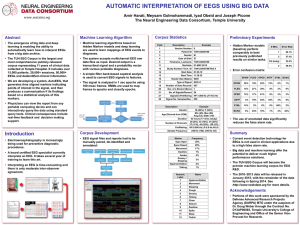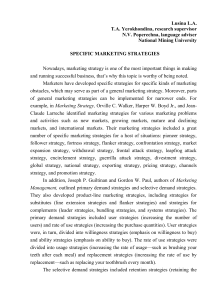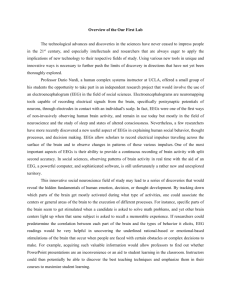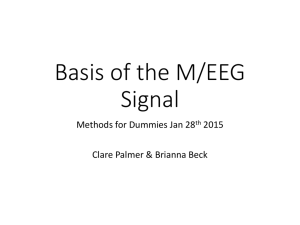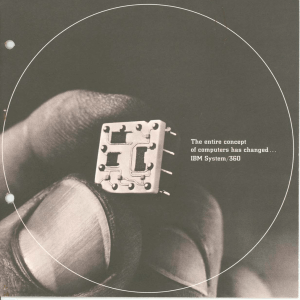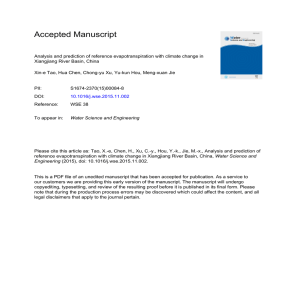Neural mechanisms of post-decisional spreading of alternatives
advertisement
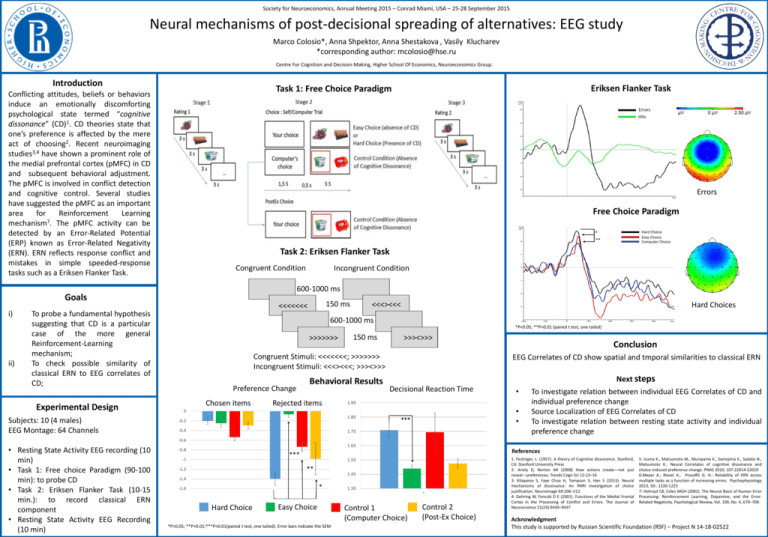
Society for Neuroeconomics, Annual Meeting 2015 – Conrad Miami, USA – 25-28 September 2015 Neural mechanisms of post-decisional spreading of alternatives: EEG study Marco Colosio*, Anna Shpektor, Anna Shestakova , Vasily Klucharev *corresponding author: mcolosio@hse.ru Centre For Cognition and Decision Making, Higher School Of Economics, Neuroeconomics Group. Introduction Conflicting attitudes, beliefs or behaviors induce an emotionally discomforting psychological state termed “cognitive dissonance” (CD)1. CD theories state that one’s preference is affected by the mere act of choosing2. Recent neuroimaging studies3,4 have shown a prominent role of the medial prefrontal cortex (pMFC) in CD and subsequent behavioral adjustment. The pMFC is involved in conflict detection and cognitive control. Several studies have suggested the pMFC as an important area for Reinforcement Learning mechanism7. The pMFC activity can be detected by an Error-Related Potential (ERP) known as Error-Related Negativity (ERN). ERN reflects response conflict and mistakes in simple speeded-response tasks such as a Eriksen Flanker Task. Errors Hits Errors Free Choice Paradigm ii) To probe a fundamental hypothesis suggesting that CD is a particular case of the more general Reinforcement-Learning mechanism; To check possible similarity of classical ERN to EEG correlates of CD; Experimental Design Task 2: Eriksen Flanker Task Congruent Condition Incongruent Condition 600-1000 ms 150 ms <<<<<<< <<<><<< Hard Choices 600-1000 ms *P<0.05; **P<0.01 (paired t test, one tailed) >>>>>>> 150 ms >>><>>> Congruent Stimuli: <<<<<<<; >>>>>>> Incongruent Stimuli: <<<><<<; >>><>>> Preference Change Chosen items Behavioral Results Conclusion EEG Correlates of CD show spatial and tmporal similarities to classical ERN Next steps Decisional Reaction Time Rejected items • • • Subjects: 10 (4 males) EEG Montage: 64 Channels • Resting State Activity EEG recording (10 min) • Task 1: Free choice Paradigm (90-100 min): to probe CD • Task 2: Eriksen Flanker Task (10-15 min.): to record classical ERN component • Resting State Activity EEG Recording (10 min) Hard Choice Easy Choice Computer Choice * ** Goals i) Eriksen Flanker Task Task 1: Free Choice Paradigm To investigate relation between individual EEG Correlates of CD and individual preference change Source Localization of EEG Correlates of CD To investigate relation between resting state activity and individual preference change References Hard Choice Easy Choice *P<0.05; **P<0.01;***P<0.01(paired t test, one tailed). Error bars indicate the SEM Control 1 (Computer Choice) Control 2 (Post-Ex Choice) 1: Festinger, L. (1957). A theory of Cognitive dissonance. Stanford, CA: Stanford University Press 2: Ariely D, Norton MI (2008) How actions create—not just reveal—preferences. Trends Cogn Sci 12:13–16 3: Kitayama S, Faye Chua H, Tompson S, Han S (2013). Neural mechanisms of dissonance: An fMRI investigation of choice justification. NeuroImage 69:206–212 4: Gehring W, Fencsik D E (2001). Functions of the Medial Frontal Cortex in the Processing of Conflict and Errors. The Journal of Neuroscience 21(23):9430–9437 5: Izuma K., Matsumoto M., Murayama K., Samejima K., Sadato N., Matsumoto K.: Neural Correlates of cognitive dissonance and choice-induced preference change. PNAS 2010, 107:22014-22019 6:Meyer A., Riesel A., Proudfit G. H.: Reliability of ERN across multiple tasks as a function of increasing errors. Psychophysiology 2013, 50:. 1220-1225 7: Holroyd CB, Coles MGH (2002). The Neural Basis of Human Error Processing: Reinforcement Learning, Dopamine, and the ErrorRelated Negativity. Psychological Review, Vol. 109, No. 4, 679–709. Acknowledgment This study is supported by Russian Scientific Foundation (RSF) – Project N 14-18-02522




